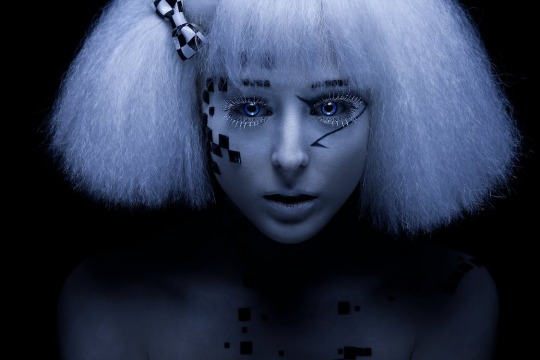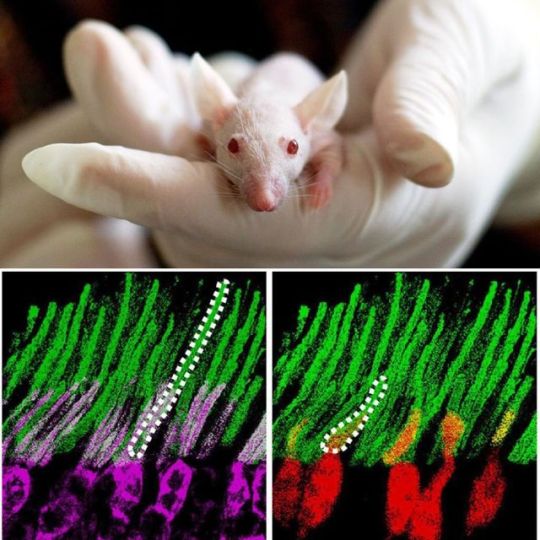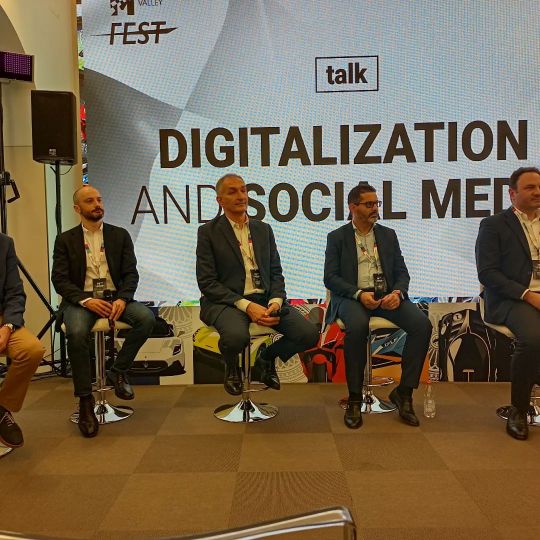#HumanAugmentation
Explore tagged Tumblr posts
Text
#ElonMusk#xAI#Neuralink#TechEntrepreneur#InnovationLeaders#AIStartup#TechInvesting#BrainTech#HumanAugmentation#ExplainableAI#NeuroscienceNews#TechVision2025#MindMachineInterface#TechNews2025#ElonUpdates#FromDogetoData#SmartTech#NextBigThing#AIForAll
0 notes
Text
A Glimpse into the Future of Neuralink and BCIs
Imagine controlling a device in your home simply by thinking about it or typing an email without reaching for a keyboard. This is becoming a reality with the rise of Brain-Computer Interfaces (BCIs). Pioneered by innovators like Elon Musk and his company Neuralink, BCIs promise to transform our relationship with technology. As we explore ongoing research and data, it's clear that BCIs could significantly reshape society.
Understanding Brain-Computer Interfaces (BCIs)
BCIs create a communication bridge between the brain and external devices. This can happen in two main ways: invasive techniques that require surgery, such as Neuralink’s electrode implants, and non-invasive methods like EEG caps, which measure electrical activity from the scalp. For instance, Neuralink's focus is on embedding tiny electrodes within the brain to read and interpret neural signals, thus enabling users to control devices through thought alone.
A compelling study published in Nature showcased a monkey that learned to move a computer cursor just by thinking about the actions. Over time, the monkey’s accuracy improved significantly, highlighting the adaptability of BCIs for more intricate tasks.
Currently, the neurotechnology market is on a growth trajectory, with spending expected to exceed $18 billion by 2027. This increase in investment underscores the potential for BCIs to redefine human-computer interactions.
Neuralink: Pioneering the Frontier
Founded in 2016 by Musk, Neuralink is focused on developing devices that connect seamlessly with the human brain. Early strides include a prototype that communicates with neurons in pigs. A significant instance was when a pig named Gertrude had a Neuralink device implanted. She demonstrated her ability to interact with digital platforms, marking a milestone for the company.
In 2021, Musk indicated that human trials would begin soon. This essential step could confirm the safety and practicality of these systems in real-world settings. The aim is to assist individuals with severe neurological conditions, such as paralysis, by enabling them to control devices like computers or wheelchairs through thoughts alone.
The Science Behind BCIs: Data and Statistics
Research in the BCI sector is rapidly expanding. A noteworthy study from the Journal of Neural Engineering investigated 10 patients with locked-in syndrome, revealing that, with the right algorithms, their thoughts could be translated into actions with over 70% accuracy.
Another revealing study from the University of California, San Francisco (UCSF) involved 25 participants playing a brain-controlled video game. Results showed that their accuracy improved by nearly 50% within just three gaming sessions. This indicates that with practice, users can enhance their brain signal interpretation and control capabilities.
Experts predict the BCI market will grow at a compound annual growth rate of 16.4% through 2027. This growth reflects the increasing enthusiasm from both investors and researchers.

Applications Beyond Gaming and Telepathy
While the idea of mind-controlled gaming is thrilling, BCIs hold promise in various fields. Here are some exciting applications:
Medical Rehabilitation
BCIs could reshape rehabilitation, particularly for stroke and serious injury patients. By leveraging the brain's capacity to rewire itself, BCIs can facilitate targeted therapies that strengthen specific neural pathways. For example, studies have shown that individuals with spinal cord injuries have successfully performed motor tasks using neural signals from BCIs, accomplishing results comparable to those with uninjured spinal functions.
Advancements in Communication
BCIs could revolutionize communication for individuals with conditions like ALS. Imagine expressing thoughts without ever speaking a word. Research is already underway to transform neuroprosthetic signals into speech, indicating that real-time thought-based communication may soon be a reality.
Ethical Considerations and Challenges
Like any cutting-edge technology, BCIs present significant ethical dilemmas, such as privacy issues and the risk of misuse. The potential for unauthorized access to someone's thoughts raises serious concerns.
Another challenge is ensuring equal access to these technologies. Those who can afford BCIs may gain considerable advantages over others. Therefore, careful regulations and societal discussions are essential to navigate these risks while maximizing benefits.
The Future of Thought-Based Typing
One promising advancement for BCIs is thought-based typing systems. Early tests show that individuals can select letters on a screen merely by thinking about them. According to ABI Research, the market for thought-controlled keyboard interfaces could reach 1.3 million units globally by 2025, illustrating how quickly these advancements might integrate into everyday life.
Gaming: The Next Dimension
The gaming industry is on the verge of a revolution, with BCIs offering players an entirely new experience. Imagine controlling games with your thoughts. A study from Dartmouth College found that players using BCIs felt a stronger emotional connection to game characters compared to traditional gaming, creating more immersive experiences.

The Promise of Telepathic Communication
One of the most ambitious ideas associated with BCIs is telepathic communication. While still theoretical, studies show that direct exchanges of thoughts are possible. A collaborative study demonstrated that participants wearing BCI headsets could send simple messages via brain signals. While not fully developed, these findings lay the groundwork for future advancements.
Imagining a Thought-Driven Future
As we continue to witness progress within BCIs, our future looks promising. Neuralink and other companies are striving to erase barriers between human thought and machine communication, making strides in areas like medical rehabilitation and gaming.
While there will certainly be challenges and ethical questions to address, the advantages of BCIs could redefine how we experience the world. Envisioning a future filled with mind-controlled computing and real-time communication offers an exciting glimpse into what may come. As technology continues to advance, we may find that the distinction between human thought and digital interactions becomes increasingly blurred, leading to a richer human experience.
#BrainComputerInterface#BCI#Neurotechnology#ArtificialIntelligence#Neuroscience#FutureOfTech#MindControl#Neuralink#ElonMusk#TechInnovation#AIRevolution#WearableTech#DigitalTransformation#FutureOfAI#CognitiveComputing#HumanAugmentation#BrainTech#EmergingTech#Innovation#TechForGood
1 note
·
View note
Text
Elon Musk’s Neuralink Reports Trouble With First Human Brain Chip

Elon Musk’s Neuralink Reports Trouble With First Human Brain Chip
📖To read more visit here🌐🔗: https://onewebinc.com/news/first-neuralink-chip-experiences-technical-issues/
#neuralink#brainchip#braincomputerinterface#bci#elonmusk#neuroscience#technology#medicaltechnology#neuralinkissues#brainchipproblems#bcimalfunction#setbackforscience#neuralinkethics#brainchipethics#humanaugmentation#futureoftechnology#neuroscienceadvancements#welearnfromchallenges
0 notes
Text
Get to Know Human Augmentation: A Cheerful Guide to Enhance Your Abilities

Human augmentation is a fascinating topic that has been around for centuries. From smart glasses to enhance vision to using hearing aids to improve hearing, humans have always been seeking ways to enhance their natural abilities. With the advancement of technology, the possibility of human augmentation has become more feasible than ever before. Read the full article
0 notes
Video
youtube
MIND-BLOWING Augmentation Secrets Revealed
#youtube#Transhumanism FutureOfHumanity TechInnovation HumanAugmentation CyborgLife Posthumanism AIRevolution Biohacking LifeExtension Singularity Hu
0 notes
Video
youtube
Meta's AI: Typing with Your Brain?#sciencefather #neuroscience #brainhealth
Meta’s latest brain-computer interface can translate thoughts into text with surprising speed and accuracy. This breakthrough brings us closer to seamless human-AI interaction—but it also raises big questions about privacy, ethics, and how our thoughts could be used or misused.
#MetaAI #BrainComputerInterface #NeuroTech #AIInnovation #FutureOfTechnology #MindControlTech #BCI #TechEthics #AIRevolution #HumanAugmentation #braintechnology ___________________________________________________________________________________________________________________________ MoreInfo:
Websiten link: https://neuroscientists.net/
Contact: [email protected]
Nomination link: https://neuroscientists.net/award-no mination/?ecategory=Awards&rcategory=Awardee ________________________________________________________________________________________________________________
Socialmedia:
Youtube: https://www.youtube.com/channel/UCZ9RPAjr0vKVJ91LUi4o4ig
Twitter: https://x.com/ScientistsNeuro
Pininterest: https://in.pinterest.com/neuroscientistsawards/
Linked in: https://www.linkedin.com/feed/
Instagram link: https://www.instagram.com/laramaria3040/
blogger:https://www.blogger.com/blog/posts/4217723762166
0 notes
Text
Wireless Brain-Machine Interfaces Market: Expanding from $1.2B to $6.5B by 2034
Wireless Brain-Machine Interfaces (BMI) Market is set to grow from $1.2 billion in 2024 to $6.5 billion by 2034, achieving a��CAGR of 18.5%. These cutting-edge systems enable seamless brain-to-device communication, transforming healthcare, neuroprosthetics, gaming, and cognitive research.
To Request Sample Report: https://www.globalinsightservices.com/request-sample/?id=GIS11158 &utm_source=SnehaPatil&utm_medium=Article
Market Trends & Key Segments
🧠 Neurorehabilitation leads the market, offering breakthrough treatments for neurological disorders. 🎮 Gaming & entertainment is the second-fastest-growing segment, enhancing immersive experiences. 📡 Wireless EEG and fMRI technologies are revolutionizing real-time neural signal processing.
Regional Insights
🇺🇸 North America dominates, with strong R&D investments and major players like Neuralink. 🇪🇺 Europe follows, driven by government funding and neurotech advancements. 🌏 Asia-Pacific is an emerging hotspot, fueled by increasing investments in brain-computer interface (BCI) research.
Market Segmentation Breakdown
🔹 By Type: Invasive (55%), Non-Invasive (30%), Partially Invasive (15%). 🔹 By Product: Headsets, Implants, Neural Signal Processing Units. 🔹 By Technology: EEG, ECoG, fMRI, NIRS. 🔹 By Application: Healthcare, Gaming, Smart Home Control, Defense. 🔹 By Key Players: Neuralink, Kernel, Synchron are driving industry innovation.
Growth Drivers & Future Outlook
✅ Advancements in AI-powered neural signal decoding. ✅ Rising adoption in neuroprosthetics & mental health applications. ✅ Integration with AR/VR for next-gen human-computer interaction.
The future of brain-machine interfaces is wireless, intuitive, and transformative, unlocking unprecedented possibilities in neuroscience and beyond.
📢 The next evolution of human connectivity is here!
#BrainMachineInterface #WirelessTech #Neurotech #AIinHealthcare #NeuralEngineering #Neuroscience #WearableTech #MindControl #CognitiveEnhancement #EEG #BrainWaves #Neuroprosthetics #SmartWearables #HumanAugmentation #HealthcareInnovation #NeuroRehab #BCITech #Neuralink #BrainData #NeuroScienceRevolution #MentalHealthTech #BrainToComputer #FutureOfTech #NeuralInterfaces #NeuralSignalProcessing #GamingTech
0 notes
Text
🤖 Medical Exoskeletons: Market to Hit $3.2B by 2034
Medical Exoskeleton Development Market is revolutionizing mobility through wearable robotic devices that enhance physical capabilities and support rehabilitation. Designed to assist individuals with mobility impairments, these devices combine cutting-edge materials, sensors, and AI-driven technologies, offering solutions for healthcare facilities, rehabilitation centers, and personal use. This innovation reflects a commitment to improving quality of life and fostering human autonomy.
To Request Sample Report: https://www.globalinsightservices.com/request-sample/?id=GIS11015 &utm_source=SnehaPatil&utm_medium=Article
The market is experiencing rapid growth, driven by advancements in robotics and increasing demand for rehabilitation solutions. Rehabilitation exoskeletons lead the market with a 55% share, catering to patients with spinal cord injuries, neurological disorders, and those undergoing physical therapy. Industrial exoskeletons, accounting for 30%, are gaining traction due to their role in workforce safety and productivity. Military exoskeletons, holding a 15% share, are advancing human endurance and strength in demanding environments.
North America dominates the market, led by the United States, which benefits from strong R&D capabilities, regulatory support, and high healthcare expenditure. Europe follows closely, with significant investments in medical technology from countries like Germany and the UK. The Asia-Pacific region is emerging as a lucrative opportunity, driven by growing healthcare investments and a rising aging population.
The market is segmented across various types, including powered, passive, and hybrid exoskeletons, with applications in rehabilitation, assisted living, industrial, military, and sports. Key players such as ReWalk Robotics, Ekso Bionics, and Cyberdyne Inc. are at the forefront, leveraging innovation and strategic partnerships to shape market dynamics.
Projections indicate a robust 15% annual growth rate, fueled by advancements in AI integration, lightweight materials, and healthcare investments. Regulatory frameworks, such as FDA approvals and Europe’s MDR, ensure safety and efficacy. Despite challenges like high production costs and limited reimbursement policies, the future holds immense potential, particularly in emerging economies and personalized healthcare solutions.
#MedicalExoskeletons #RehabilitationTech #AIInHealthcare #WearableTechnology #AssistiveDevices #MobilityInnovation #FutureOfHealthcare #ExoskeletonDevelopment #HumanAugmentation #HealthcareRobotics #SmartHealthcare #RehabilitationSolutions #IndustrialExoskeletons #MilitaryExoskeletons #AgingPopulation #GlobalHealthcare #ExoskeletonTechnology #AIIntegration #RehabDevices #WearableRobotics #ExoskeletonMarket #SmartRehabilitation #MedicalInnovation #RoboticsInHealthcare #NextGenHealthcare
0 notes
Text

Christ The Terminator: Half Man Half Machine
“I’ll Be Back”
By Author Eli Kittim
End-Time Visions of the Messiah’s Robotic Enhancements
What if Jesus paid a steeper price for our salvation? What if Christ is “revealed at the final point of time” (1 Pet. 1.20 NJB)? What if his sacrifice “in the end of the world” (Heb. 9.26b KJV) is more costly than previously assumed?
In his vision, the prophet Ezekiel saw certain heavenly creatures who “were of human form” (1.5 NRSV). Notice what he says about their legs (1.7):
Their legs were straight, and the soles of
their feet were like the sole of a calf's foot;
and they sparkled like burnished bronze.
As you read further, you will come to realize that this imagery runs throughout the entire Bible. Remarkably, Ezekiel’s description sounds very much like modern bionic prosthetics, which redefine and enhance human amputees. Let’s not forget that the heavenly figures whom Ezekiel had seen were supposedly human. Two other interesting clues were that “their legs were straight” (unlike human legs that bend) and that “their feet were like . . . burnished [Hb. קָלָֽל׃ qalal] bronze [Hb. נְחֹ֥שֶׁת nechosheth].” This is a running theme throughout the Bible whose imagery is associated with the end-time Messiah! Similarly, in Revelation 1.13-15, John describes his vision of Christ as follows:
I saw one like the Son of Man, clothed with
a long robe and with a golden sash across
his chest. His head and his hair were white
as white wool, white as snow; his eyes were
like a flame of fire, his feet were like
burnished bronze, refined as in a furnace,
and his voice was like the sound of many
waters.
Notice the imagery pertaining to Christ’s “feet [which] were like burnished bronze [Gk. χαλκολιβάνῳ].” By comparison, in Daniel 10.1 we are told that “In the third year of King Cyrus of Persia a word was revealed to Daniel.” Remember that, in the Bible, Cyrus represents the Messiah (see Isa. 45.1). Daniel sees a vision of the end times, described by a glorious man who looks awfully similar to John’s “Son of Man” (Dan. 10.5-6):
I looked up and saw a man clothed in linen,
with a belt of gold from Uphaz around his
waist. His body was like beryl, his face like
lightning, his eyes like flaming torches, his
arms and legs like the gleam of burnished
bronze, and the sound of his words like the
roar of a multitude.
Daniel gives us additional information by saying that “his arms and legs [were] like the gleam of burnished [Hb. קָלָ֑ל qalal] bronze [Hb. נְחֹ֣שֶׁת nechosheth].” In other words, it wasn’t just his legs, but his arms as well were seemingly made of burnished bronze! It sounds like a combat soldier who had lost all his limbs and was wearing a metallic or robotic prosthesis. And Daniel employs the exact same Hebrew words for “burnished bronze” that are used in Ezekiel’s vision. Furthermore, in Revelation 2.18, Christ himself identifies with this biblical image, demonstrating categorically and unequivocally that it refers to him and him alone. Christ says:
And to the angel of the church in Thyatira
write: These are the words of the Son of
God, who has eyes like a flame of fire, and
whose feet are like burnished bronze.
Chalkolibanon: The Messiah’s Feet Were Like Burnished Bronze
καὶ οἱ πόδες αὐτοῦ ὅμοιοι χαλκολιβάνῳ
https://biblehub.com/greek/5474.htm
The Greek word chalkolibanon is translated as “burnished bronze” and refers to “a fine metal,” such as “fine copper, bronze or brass,” similar to what the Hebrew term for bronze (i.e. nechosheth) represents.
https://biblehub.com/hebrew/5178.htm
These images that are therefore uniquely related to Jesus strongly suggest that they’re part of his human makeup and physical appearance. Why else would the Bible contain these metallic images? All these prophets from both the Old and New Testament seem to suggest that the Messiah’s “sacrifice” entails the loss of his limbs, which are replaced by modern metallic substitutes, turning him into a kind of Cyborg. An article from the Australian Academy of Science expounds on this type of modern technology:
What’s different about the new generation
of prosthetic limbs is their union with bionic
technology, and the way they combine
fields of study as diverse as electronics,
biotechnology, hydraulics, computing,
medicine, nanotechnology and prosthetics.
Technically, the field is known as
biomechatronics, an applied
interdisciplinary science that works to
integrate mechanical elements and devices
with biological organisms such as human
muscles, bones, and the nervous systems.
https://www.science.org.au/curious/people-medicine/bionic-limbs
Incidentally, a wide variety of materials are used to create artificial limbs, including aluminium bronze and titanium bronze alloys, which are shiny metals. Copper, iron, silver, and gold have also been used in the past. Surprisingly, these are the exact metallic descriptions that we find in the aforesaid passages of the Bible (cf. Dan. 2.32-33: “head of . . . gold . . . arms of silver . . . thighs of bronze. . . legs of iron . . . feet partly of iron and partly of clay [human]”).
Robotics for Human Augmentation in the Visions of Daniel
Dual fulfillment is an important principle of Biblical interpretation. It’s associated with the concept of messianic typology in the Hebrew Bible. It refers to the notion that there are certain prophecies in the Bible that may have both an immediate and a long-term fulfilment. The gigantic statue of a man made of four metals, in the Book of Daniel, is such a prophecy, that might be a clue to the endtimes Christ. It has a short-term fulfillment in terms of the succeeding world-empires that will arise and rule on earth. However, Daniel 2.44 suggests that the prophecy also refers to the end of days (a long-term fulfillment) when God will set up his kingdom once for all! Daniel 2.31-33 (NRSV) explains Nebuchadnezzar’s dream as follows:
You were looking, O king, and lo! there was
a great statue. This statue was huge, its
brilliance extraordinary; it was standing
before you, and its appearance was
frightening. The head of that statue was of
fine gold, its chest and arms of silver, its
middle and thighs of bronze, its legs of iron,
its feet partly of iron and partly of clay.
Let’s not forget that Daniel addresses the Babylonian king Nebuchadnezzar as if he’s the the king of kings, the Messiah (2.37-38):
You, O king, the king of kings—to whom the
God of heaven has given the kingdom, the
power, the might, and the glory, into whose
hand he has given human beings, wherever
they live, the wild animals of the field, and
the birds of the air, and whom he has
established as ruler over them all—you are
the head of gold.
There are messianic overtones, here, that go far beyond the historical context of the passage and suggest a future fulfillment. The dream features a towering statue of a man (Daniel 2.32-33):
The head of that statue was of fine gold, its
chest and arms of silver, its middle and
thighs of bronze, its legs of iron, its feet
partly of iron and partly of clay.
Once again, we get the feeling this is more of a machine than a man. Notice that the legs were made of iron and bronze. What if Daniel 4.13-15 represents God’s judgment on the Messiah? (cf. 2 Cor. 5.21; Gal. 3.13):
I continued looking, in the visions of my
head as I lay in bed, and there was a holy
watcher, coming down from heaven. He
cried aloud and said: ‘Cut down the tree
and chop off its branches, strip off its
foliage and scatter its fruit. Let the animals
flee from beneath it and the birds from its
branches. But leave its stump and roots in
the ground, with a band of iron and bronze,
in the tender grass of the field. Let him be
bathed with the dew of heaven, and let his
lot be with the animals of the field in the
grass of the earth.’
Conclusion
There’s a running narrative throughout the Old and New Testaments that includes thematic parallels and verbal agreements between the visions of various prophets. The terminology has not only been surprisingly consistent from prophet to prophet, but its meaning has also been uniform from one language to another. For example, both Ezekiel and Daniel use identical Hebrew terms to describe what appears to be a Messianic figure, whose feet were “like burnished [Hb. קָלָֽל׃ qalal] bronze [Hb. נְחֹ֥שֶׁת nechosheth]” (Ezek. 1.7; cf. Dan. 10.6)! Astoundingly, the exact same meaning (i.e. χαλκολίβανον; burnished bronze) as applied to the Hebrew Old Testament is employed in the Greek New Testament (Rev. 1.15; 2.18) to convey a similar idea. This suggests that the Biblical books are inspired and in dialogue with one another.
Accordingly, the arms and legs of the purported Messiah do not appear to be human. Rather, they appear to be robotic metals for human augmentation, what we today would call modern bionic prosthetics in redefining and enhancing human amputees. The consistent thematic material (i.e. the canonical context) in the visions of the prophets, especially those of Daniel, is exegetically significant and cannot be simply explained away. What if Daniel 4.14 represents God’s judgment on the Messiah to cut off “his arms and legs”? (cf. Dan. 10.6):
Cut down the tree
and chop off its branches.
Given that the “tree image” in Dan. 4.10-12 is of paramount importance and immersed in messianic metaphors (cf. Jn 15.5; Rev. 22.2), it could certainly represent the Anointed one. All these prophets from both the Old and New Testament seem to suggest that the Messiah’s “sacrifice” entails the loss of his limbs, which are replaced by modern metallic substitutes, turning him into a kind of Cyborg or Bionic Man! The same shiny metals that are referenced in the Bible are the exact same alloys used in prosthetic limbs and modern robotics for human augmentation (i.e. human-enhancement technologies). A close reading of these end-time visions suggests that the Son of Man is part man part machine. This is called “transhumanism,” the merger of humanity with artificial intelligence. This would imply that Christ’s suffering on Judgment day is far more intense than previously thought, which also reflects the profound depth of his love for us!
#terminator#roboticenhancements#christsuffering#holywatchers#propheticvisions#burnishedbronze#bionicprosthetics#Physicallyhandicapped#amputees#amputated#χαλκολιβάνῳ#Christsacrifice#lossoflimbs#cyborg#prosthetic limbs#biomechatronics#artificiallimbs#bronzealloys#HumanAugmentation#Eli_Kittim#the little book of revelation#Dualfulfillment#messianictypology#Danielcompositestatue#judgment day#bionic man#partmanpartmachine#halfmanhalfmachine#human-enhancement technology#transhumanism
7 notes
·
View notes
Photo

Seeing IR (infrared). Low energy IR (800 nm) radiation cannot be detected by human eyes and those of mice 🐁 due to the fact that our eyes 👀 have photoreceptors that absorb light in the visible spectrum (380-740 nm). . However, recent research in vision shows that it maybe possible for humans to see IR in the near future. Scientists injected nanoparticles containing rare-earth metals conjugated with the protein concanavalin A that acts as a glue to attach the nanoparticles to the rods and cones in the eyes of mice. . Further experiments showed that not only did the nanoparticles bind to these photoreceptor cells, but also activated them by converting the low energy IR to higher energy green light 💡 that can be detected by mice. Thus, the mice were able to see IR and find themselves out of a maze with IR cues. . Science article: https://www.sciencedaily.com/releases/2019/02/190228141412.htm . Credit: YMa et al / Cell / 177/2. . #cellbiology #biology #nanoparticles #nanotechnology #vision #eyes #photoreceptors #visiblespectrum #humanaugmentation #cyborg #infrared #nightvision https://www.instagram.com/p/B1t0fUvBjhF/?igshid=vn0u05o5sieb
#cellbiology#biology#nanoparticles#nanotechnology#vision#eyes#photoreceptors#visiblespectrum#humanaugmentation#cyborg#infrared#nightvision
14 notes
·
View notes
Text
0 notes
Photo

Digitalization and Social Media Metaverso Motor Valley Fest 2022 #digitalizationandsocialmedia #metaverso #metaverse #motorvalleyfest2022 #influenceravatarworld #marketingperilcliente #marketingconilcliente #connessionevirtualereale #humanaugmentation #securitybydesign #cybersecurity #blockchain #automotive #2015perfectstorm #oem #nuovoecosistemadelvalore #catenadelvalore #semplificazionedelleprocedure #cambiodiparadigma #sicurezzadeidati #chipsat #semiconduttori (at Selmi 22) https://www.instagram.com/p/CeD0yLRqTjs/?igshid=NGJjMDIxMWI=
#digitalizationandsocialmedia#metaverso#metaverse#motorvalleyfest2022#influenceravatarworld#marketingperilcliente#marketingconilcliente#connessionevirtualereale#humanaugmentation#securitybydesign#cybersecurity#blockchain#automotive#2015perfectstorm#oem#nuovoecosistemadelvalore#catenadelvalore#semplificazionedelleprocedure#cambiodiparadigma#sicurezzadeidati#chipsat#semiconduttori
0 notes
Photo

Are you willing to be reprogrammed? Will you join the cybergenration? Find out where our society is headed in the near future. Start reading today. www.mikelwisler.com/sleepwalker #sciencefiction #scifi #scifinovel #cyberpubk #cyberpunknovel #lgbtqscifi #lgbtqnovel #futuristic #humanaugmentation #nanotechnology #nanotech #darpa #augcog #neuroscience #neuroscifi #lesbianhero #brainrewiring #hackableanimals (at Boston, Massachusetts) https://www.instagram.com/p/B_doyaAp8fa/?igshid=1e8leozn1eukk
#sciencefiction#scifi#scifinovel#cyberpubk#cyberpunknovel#lgbtqscifi#lgbtqnovel#futuristic#humanaugmentation#nanotechnology#nanotech#darpa#augcog#neuroscience#neuroscifi#lesbianhero#brainrewiring#hackableanimals
0 notes
Photo

The #Museum of the #Future is not like other #museums. It doesn't show you items from the #past. It's an #exhibition for #innovative and futuristic #ideologies, #services, and #products. It focused on #ArtificialIntelligence, #humanaugmentation & more. This is the #artoftheday.
#museum of the future#future#architecture#masterpiece#art#artoftheday#past#innovative#innovation#change#ideology#services#products#artificial intelligence#AI
2 notes
·
View notes
Text
Leader of Learning
I am a passionate educator and an aspiring leader in the space of enabling progressive learning for all, at schools and at workplaces. I have been facilitating professional training for people at work and in schools towards enhanced business communication and soft skills for nearly a decade now. Every day, as I educate leaders of today and of the future, the inseparability of being a good learner and being a good leader becomes ever more insistent. Enabling people who want to, to learn better and to lead better, has thereby been a relentless pursuit for me. Ensued from which also the realization that in the face of exploding information and unprecedented advancements in human knowledge, if we want to remain capable of good learning and good leadership in the long run, we must do better than we are doing right now. To this end, I have now become imbued with my stake in progressive education and human augmentation.
0 notes
Text
Despite all the nice #humanaugmentation use cases that #6G will bring through #AR, #VR or connected #IoT devices, massive #bigdata, #extremeconnectivity and many other factors come in-play. What to consider in the new #digital era #system #architecture?
0 notes